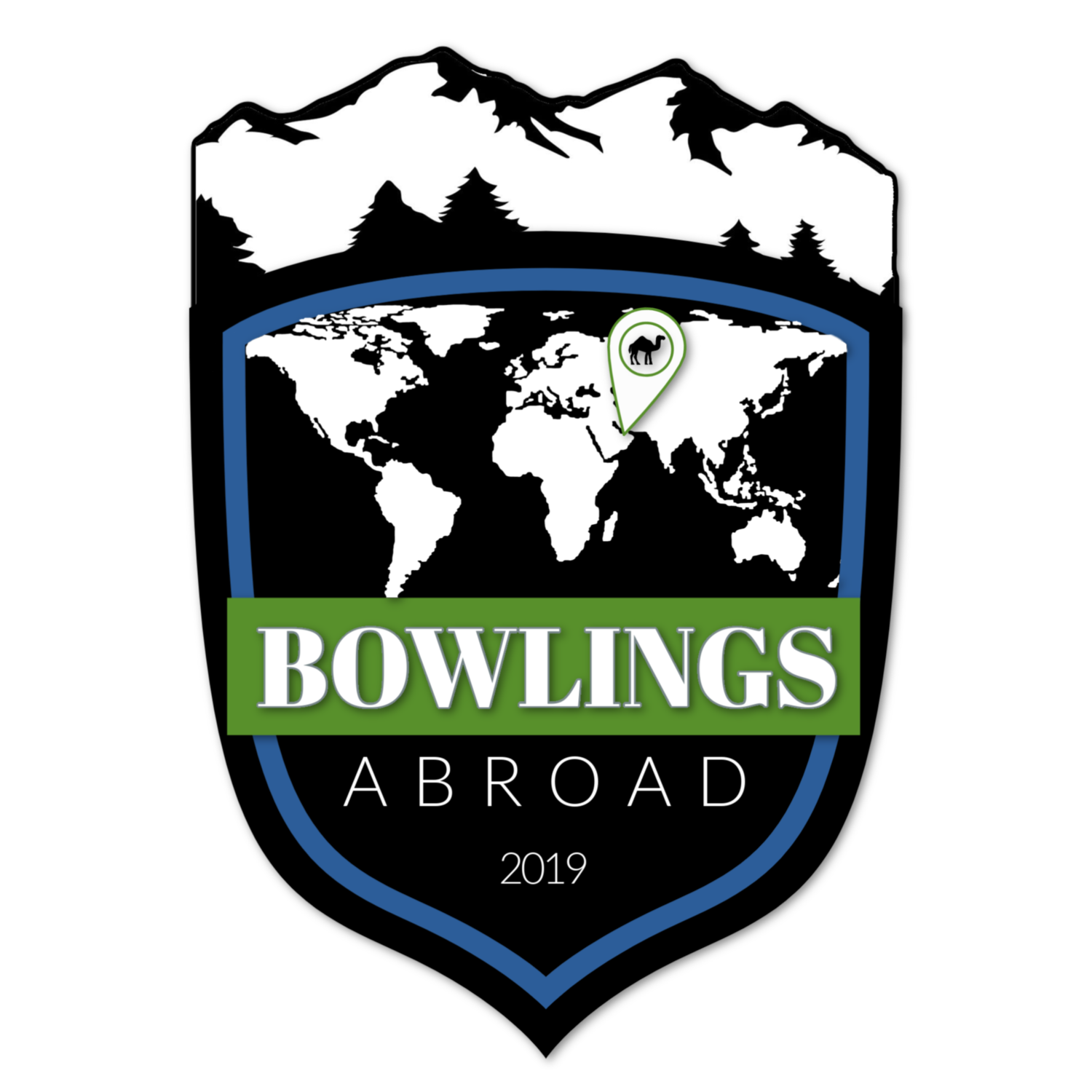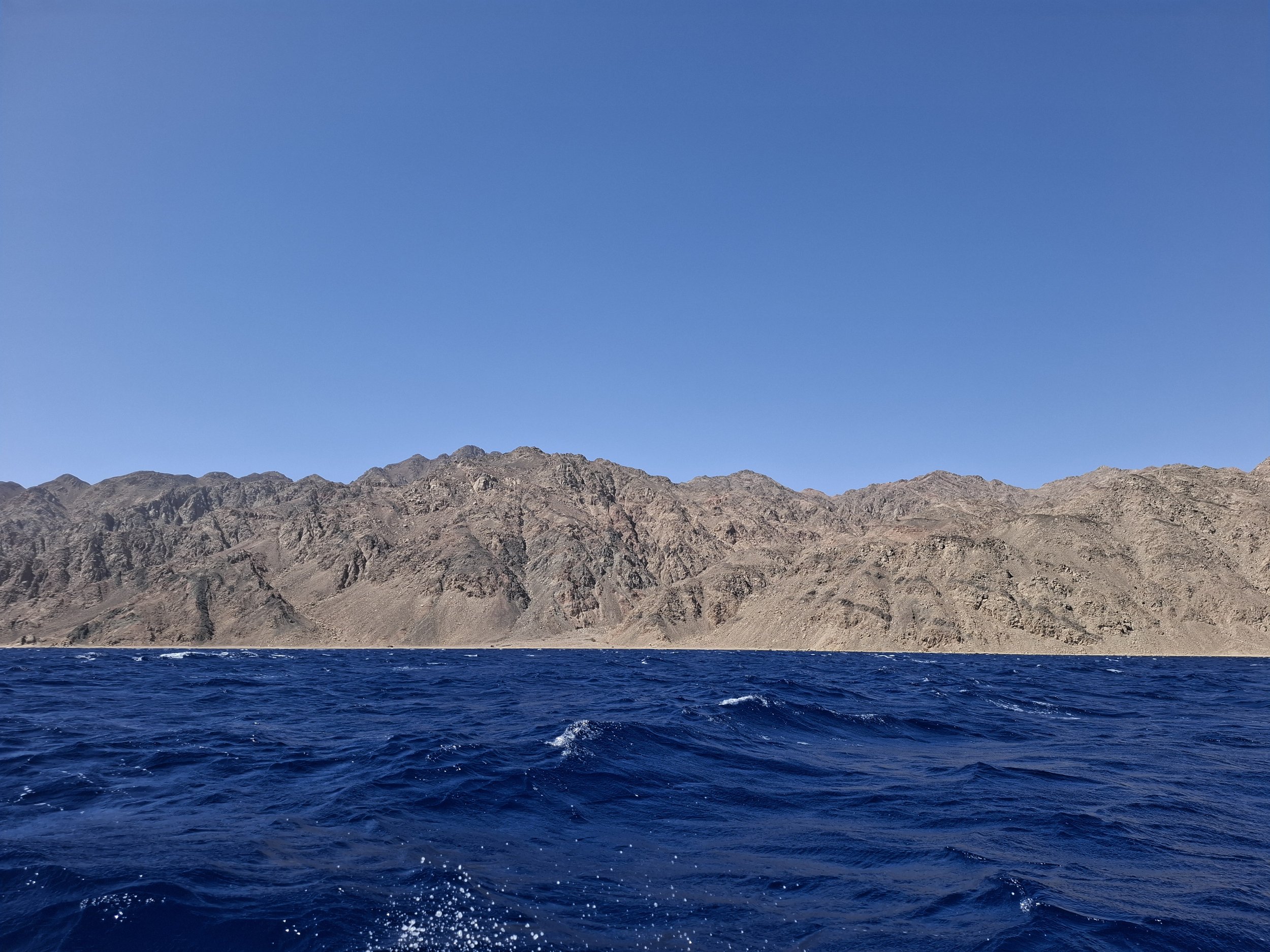Dahab: Where the Desert Meets the Sea
Whoever came up with the “Red Sea” should be fired. The sea is in fact both deep, dark blue and vibrant turquoise or Gatorade “Blue Raspberry” depending where your eyes fall.
After three days of online parent-teacher conferences here in Abu Dhabi, we hopped on Egypt Air , and journeyed from Abu Dhabi to Cairo to Sharm-El-Sheikh and then were picked up by the best travel docent in the game li, Ramy. If you haven’t read our blog about the Cairo & Luxor trip with Travel Ra Amen, do so now.
Dahab is giving Tulum circa 2010 pre-being ruined by Instagram influencer vibes, Dahab is that beach town. While Cancun-esque Sharm-al-Sheikh has fancy resorts and pulls in those polo-shirt-wearing-former-frat-boys for their golf trip, Dahab is for those who want to wear old flip flops, athleisure, and walk down the beach. It’s for those who want to grab a snorkel or dive gear to explore the vast coral and sea life or pick up windsurfing in the Blue Lagoon. It’s for those who want to stuff their faces with high quality shrimp, calamari, or swordfish. And lastly it’s for those who find peace perched on mismatched cushions, smoking shisha, and drinking tea late into the night.
Just the Facts on Dahab and the Sinai
Official name: Sinai Peninsula (part of the Arab Republic of Egypt)
Provincial Capital: El Arish
Currency: Egyptian pound (EGP)
Language: Arabic
Independence: Part of Egypt since antiquity; occupied by Israel following the 1967 War, fully returned to Egypt under the 1979 Egypt–Israel Peace Treaty
Borders: Israel and Palestinian Gaza (northeast), and Gulf of Aqaba and Saudi Arabia (east)
Top Exports: Petroleum and natural gas; also tourism revenue from Red Sea resorts
Dahab features a long waterfront boardwalk that has seasons, it transitions from packed sand, to cement and cute lighting, peppered with cute shops, seafood restaurants, and cafes. In the center of town there’s a main street with two way traffic, busy roundabouts, and the usual local shops. Cafes next to fruit stands next to bike shops next to bakeries next to corner tiendas. When you step off the main drag, you’ll find beautiful street art, hella goats looking for snacks and a few camels and roosters hanging out in the backyard of someone’s villa or apartment.







Putting on our Human Geography cap for a moment, the people of the Sinai Peninsula are fascinating. With more than twenty Bedouin tribes still living largely traditional lives, dealing with modernization, while maintaining their traditions. For additional homework try this piece by National Geographic, this on St. Catherine, Sinai Monastery, or this Al Jazeera article on how the war in Gaza would impact the Bedouins.
This was a trip meant largely to catch up with Ramy, his wife (a former ACS colleague), and their adorable new baby. We did mostly that, consuming kilos of meat, fish, and mashi in the process.
We were in town for four nights, meandering town, eating Egyptian falafel (which we’re convinced is the best falafel thanks to fava beans, rather than chick peas), watching the waves roll in, breathing ocean air and just relaxing.
No beach town trip is complete without a boat ride. Our speedboat was manned by a kid who seemed like he was 12 years old, who while clearly “experienced”, Nate loudly questioned the development of his frontal cortex as he made some questionable choices about when to gun the engine. As you can see from the pictures, the Blue Lagoon was worth the precarious ride.
We continue to be impressed by Egypt. It’s loud, chaotic, and dusty as hell. But it’s also beautiful and packed with amazing history, food, and most importantly amazing people.

























